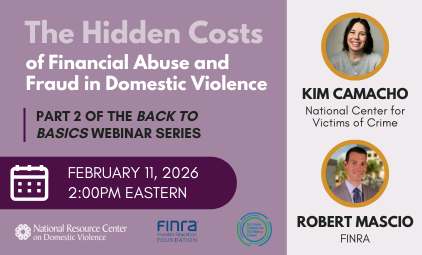Evaluations of Advocacy Efforts to End Intimate Male Violence Against Women
NRCDV Publications
General Material
Published Date
April, 1999
- Gamache, Edleson, and Schock (1988) examined the institutional impact of Community Intervention Projects (CIPs). They found that, as CIPs were introduced into three communities, arrests and successful prosecutions increased. They also noted an increase in the number of perpetrators mandated into batterer intervention programs.
- Steinman (1990) and Syers and Edleson (1992) evaluated the effectiveness of CIPs in deterring re-abuse. Steinman found that when police action was coordinated with other systems, perpetrators were significantly less likely to re-offend. Equally important, when police action was not coordinated with other components of the system, perpetrators increased their use of violence. Syers and Edleson (1992) found that arrest followed by mandated batterer intervention was the most effective strategy to reduce recidivism.
- Sullivan and colleagues (Sullivan, 1991; Sullivan & Bybee, in press) created and evaluated an advocacy program that involved providing one-on-one services to women who had exited a domestic violence shelter program. The program lasted 10 weeks, and paraprofessional advocates worked 6-8 hours a week assisting women with obtaining needed community resources. Examining the effects of the advocacy intervention over the first two years postintervention, the researchers reported: 'Women who worked with advocates had less difficulty obtaining community resources over time, experienced less violence over time, and reported higher quality of life and higher levels of social support compared to the women who did not received advocacy services.'
- These evaluations all provide evidence that advocating to change the system response to domestic violence is feasible and effective. Community Intervention Projects have resulted in increased arrests, higher conviction rates, and more perpetrators mandated into batterer intervention programs. When all components of the system work together, perpetrators were found less likely to re-abuse over time. The Community Advocacy Project, involving the provision of intensive advocacy services to survivors for 10 weeks, resulted in women reporting higher quality of life, increased social support, and fewer problems obtaining community resources. Perhaps most significantly, they also experienced less abuse over time than women who did not receive advocacy services.
- No one intervention will be a panacea for this complex social problem. Systems-level and individual-level advocacy should be viewed as important components of an overall comprehensive community approach to ensuring the safety of survivors, holding perpetrators accountable, and ultimately ending intimate violence against women.














